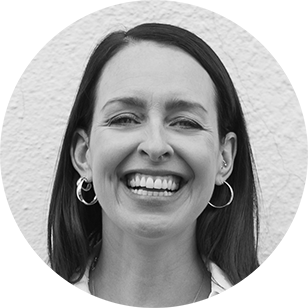Why kids are obsessed with cars, trucks, and other vehicles
Vroom, vroom


Every kid has their own obsessions. Dolls, plushies, dinosaurs, remote controls, cell phones — they might have a toy box with a wide range of playthings to keep them entertained, but there's a firm favorite they always reach for first.
Researchers call this phenomenon "extremely intense interests" (EIIs), and have found that they start to emerge at around 18 months of age and are evident in around a third of preschool-aged children. For lots of children, maybe even your own, this obsession revolves around cars. And although the sex divide in the toy world remains, it's not only little boys who are drawn to all things with wheels. My 20-month-old daughter and her treasured red bus is testament to this.
So what's the big deal about cars, trucks, trains, and buses?
The Week
Escape your echo chamber. Get the facts behind the news, plus analysis from multiple perspectives.

Sign up for The Week's Free Newsletters
From our morning news briefing to a weekly Good News Newsletter, get the best of The Week delivered directly to your inbox.
From our morning news briefing to a weekly Good News Newsletter, get the best of The Week delivered directly to your inbox.
From age 0-2, children are in the sensorimotor stage of development, explains Alyssa Wilkins, a music therapist who specializes in early childhood development and the treatment of children with autism. "They are learning by absorbing everything through their senses — sight, touch, taste, smell, hear," Wilkins says. "Toys and real-life objects like cars are very sensorily engaging. Kids can interact with toy cars, trucks, etc. through spinning their wheels, watching them move in a variety of directions, or hearing the sounds they make."
Plus, kids are just naturally drawn to loud, moving objects — it's all fun sensory input. "They see the lights on the cars, the rolling wheels, the sound of the revving engine and it's very engaging," Wilkins says. "Kids will always be drawn to flashy and loud things because that is what engages their brain and sensory systems."
Another appeal of toy vehicles is that they're typically small enough to fit in a child's hand. "Cars become the favorite of both boys and girls because they're the kind of toy that they can take — and play with — anywhere," says licensed professional counselor Roseann Capanna-Hodge, EdD. "And because they can pop their cars in their pocket or carry them around, they're easy to get attached to."
A car is also a cause-and-effect toy — it teaches children that their actions can make something happen. "It's super interesting and exciting for kids to learn that they can change something in their environment," Capanna-Hodge says. "With cars, kids can work out all kinds of fun scenarios like going up the wall or having a crash."
A free daily email with the biggest news stories of the day – and the best features from TheWeek.com
The benefits of toy cars are numerous, then. Experts agree they should be part of both boys' and girls' play environments.
"The toy car is an inexpensive, accessible toy that promotes learning, environmental exploration, independence, motor skills, problem-solving, and creativity," Capanna-Hodge says. And above all, they're fun. "There's nothing like hearing a kid work through a crash scenario with all the sounds and listening to how when one road closes they find another or watching the thrill as the car goes up a wall to avoid a monster."
While every toy car has the same basic parts, how your child plays with it depends on their unique characteristics, and nobody knows exactly what is at the root of a kid's individual play style. For instance, one child might "drive" their cars into the wall, another might line them up, bumper to bumper, and another might wrap them in a blanket.
Every child is unique in how they engage with toys, and the reasons for their play style may be diverse and complex. However, children often interact with materials in similar ways to how their families interact with them. "If a child sees a sibling or parents modeling play with a car going fast down a track, they are likely going to interact with the toy that same way," Wilkins says.
Some children seek sensory engagement from their toys in different ways. "The feel and sound of crashing cars might be interesting to them, or they may like organization and neatness so lining their toys up in a certain way may bring them calm," Wilkins says.
Ultimately, how your kid plays with their toy vehicles could be a little window into what regulates or excites them.
Want more essential commentary and analysis like this delivered straight to your inbox? Sign up for The Week's "Today's best articles" newsletter here.
Claire Gillespie is a freelance writer with bylines on Health, SELF, Refinery29, Glamour, The Washington Post, and many more. She likes to write about parenting, health, and culture. She lives in Scotland with her husband and six kids, where she uses every (rare) spare moment to work on her novel.
-
 How drones have detected a deadly threat to Arctic whales
How drones have detected a deadly threat to Arctic whalesUnder the radar Monitoring the sea in the air
-
 A running list of the US government figures Donald Trump has pardoned
A running list of the US government figures Donald Trump has pardonedin depth Clearing the slate for his favorite elected officials
-
 Ski town strikers fight rising cost of living
Ski town strikers fight rising cost of livingThe Explainer Telluride is the latest ski resort experiencing an instructor strike
